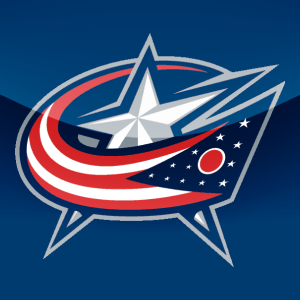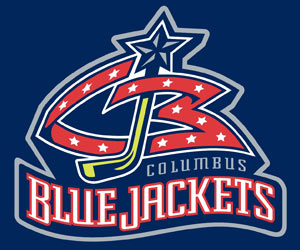During the past two seasons, I assessed how the Columbus Blue Jackets performed as a team at the first quarter of the season. Sadly, as the Blue Jackets’ performance plummeted during the remaining three quarters of last season, and as the Blue Jackets nearly repeated that ignominious feat during the second quarter of this season, I honestly didn’t think I’d have the opportunity to assess their performance for the third quarter of this season.
But, boy was I wrong!
By Ed Cmar
The Blue Jackets have salvaged their season and have positioned themselves right into the thick of the playoff race, the result of an impressive 11-3-3 run that seemingly came out of nowhere, especially considering that they had lost five consecutive games prior to the run, the majority of which were of the blowout variety.
During the second quarter of this season, the Blue Jackets were mired in a 6-14-3 collapse which rendered their 14-6-0 start for naught. It appeared they were destined for their usual role as sellers at the NHL’s trade deadline, as well as awaiting the days until the next NHL Entry Draft.
It also created unrest and discontent amongst their fans, as Blue Jackets GM Scott Howson’s off-season moves were limited to naming Scott Arniel along with an entirely new coaching staff–to replace fired head coach Ken Hitchcock–and putting in a waiver claim for former Edmonton Oiler Ethan Moreau. This, for the team with the NHL’s fourth worst record the previous season and with continued holes in the organization.
So, it appeared that whether it be new coaches or a new system, the Blue Jackets were saddled with a lack of top-tier talent, frustration with the lack of development of their cadre of young players–Kris Russell, Derick Brassard, Jakub Voracek, Steve Mason and Nikita Filatov–as well as a slew of underperforming veteran players. The Blue Jackets appeared to be a heartless, fragile team who appeared to let the ghost of the season past haunt their prospects for the current season.
Add to that was the demotion and apparent flame out of former Filatov, who has since been demoted Springfiel and former prize UFA acquisition Mike Commodore–also demoted to Springfield–and you had the makings of another lost season in Ohio’s capital city.
But, towards the end of a five-game losing streak, a new team with a new resolve began to emerge, and began an impressive 11-3-3 run which now places them only two points out of the eighth Western Conference Stanley Cup playoff spot.
How did this incredible turnaround occur?
It begins with the phenomenal job Arniel has done with essentially the same cast as that of last season. Arniel and his staff have tried countless approaches to shake this moribund group from their listless funk: benchings, demotions, continuous interactions with the players and the core group with himself and that of his assistants.
While Arniel and his coaching staff might lack in pro coaching experience, all of them were former NHL players and removed from the league only recently. Thus, Arniel and his staff had a depth of experience in these situations.
The impact of the healthy scratches should not be underestimated – it has ‘lit a fire’ under several players, many of which appeared to be little more than those who didn’t appear moved by embarrassing losses and merely collecting paychecks and awaiting the start of golf season in Mid-April. Players like Russell, Voracek, Kristian Huselius, and Anton Stralman have all reemerged from their underperforming play and have led the resurgence to playoff contention.
If Arniel and his staff can somehow position this team to make the playoffs, not only does primary credit go to them, serious consideration for the Jack Adams award should also be a distinct possibly, if not a certainty.
This turnaround also should give credence to the appearance of two unlikely players from the AHL — Defenseman Grant Clitsome and Winger Matt Calvert.
Clitsome was brought up to the parent club when Rostislav Klesla was injured and when Commodore was being placed on waivers. What Clitsome has done since his arrival has been to register 3 goals and 10 assists in the 18 games since arriving. Most importantly, Clitsome’s hard and accurate shot has provided something the organization has been sorely lacking throughout their history: scoring proclivity from the point and particularly on the power play.
Calvert has also been a godsend of an addition to the team. But, for those who have watched Calvert’s impressive performances during both developmental and training camp, it doesn’t come as any surprise, at all. The only concern may have been Calvert was another in a long line of young players rushed far too soon by the Blue Jackets and that acquiring him in the throws of another mid-season slump would affect the youngster’s confidence. This was a particular concern due to Calvert being a key piece of his Junior Hockey team’s success in the playoffs.
But, what Calvert may lack in size and experience, he makes up for in hockey sense, goal-scoring, explosiveness and an innate ability to score in high-traffic areas. What’s interesting to note – ironic, actually – is that former fifth round acquisition Calvert is providing what Filatov was selected to provide: a player with jump, goal-scoring ability and a flair for the electric.
The effect of these two AHL call-ups has been remarkable. They have not only filled former holes in the parent team’s makeup, their presence has also ‘lit a fire’ to previously benched players, but have sparked the veterans and leaders of this team in their own personal on-ice performance.
Finally, the reemergence of Mason, a former Calder Trophy winner, may be the most unlikely of turnarounds which has ignited the resurgence. Previously, Mason was leading the league in the number of times a goalie was pulled for inept performance, not exactly a dubious title, and was near the bottom of the league in the areas of goals against average and save percentage. Mason seemed destined for joining the likes of ‘one hit wonders’ who took the NHL by storm, only to flame out after their rookie season had ended.
Since his putrid performance against the Chicago Blackhawks on February 1st, Mason has returned to the form of his rookie season, posting a 1.66 GAA and a .945 save%. Additionally, Mason has now gone 13-5-1 in his past 19 starts. Thus, he can truly be considered one of the primary catalysts for the turnaround.
Great credit should also be given to the return to winning form from the likes of Derick Brassard, who prior to the injury registered 13 points in his last 15 games, and Voracek who has 14 points in his last 18 games played.
But it’s perhaps the Blue Jackets team captain, Rick Nash, who has led this team by example and with his elite, unselfish play.
Nash has registered 24 points during his last 19 games, with 9 goals and 15 assists, the majority of which were spectacular feeds which led to goals scored to an unoccupied net. The team captain is essentially taking the team and his young linemate’s Brassard and Voracek on his shoulders, which has led to other teammates joining in the scoring fray, as secondary scoring has been another historic Achilles heel to the fortunes of the organization.
As it relates to numbers, here are some statistics to reflect how the Blue Jackets, as a team, ranks against the rest of the league:
Goals Scored/Game: 2.69 (Tied for 16th)
Goals Against Average: 2.69 (21st)
Goaltenders Save Percentage: .903 (21st)
Shutouts Posted: 4 (tied for 3rd)
Power Play Conversion Percentage: 15.5% (26th)
Penalty Kill Percentage: 81.3% (tied for 18th)
Now, compare these statistics against their rankings during the team’s only playoff appearance:
Goals Scored/Game: 2.63 (21st)
Goals Against Average: 2.67 (9th)
Goaltenders Save Percentage: .902 (20th)
Shutouts Posted: 11 (1st)
Power Play Conversion Percentage: 12.7% (30th)
Penalty Kill Percentage: 82.1% (12th)
While there is room for improvement, what skews these numbers were horrid performances during their 6-14-3 slide, particularly with goaltending statistics and on their power play and penalty kill. Overall, there are many similarities between this team and the season in which it made its only playoff appearance.
Burning Question: What does the future hold?
Barring injury, the Blue Jackets appear to be a runaway freight train. They have found the resolve to resurrect their seemingly lost season and have placed themselves right in the playoff mix. They have beaten teams who have previously haunted them, mostly notably the Phoenix Coyotes, the Detroit Red Wings and the Colorado Avalanche. They have become a team very few teams in the NHL want to face. They have done it with grit, they have done it with secondary scoring, they have done it with solid goaltending and, above all, they have done it without a semblance of fragility. Evidence of this last factor is their ability to come back from two-goal deficits, three times in their last 17 games.
This once fragile team, known throughout its history for often folding when giving up the game’s first goal, now rank 10th in the NHL in winning games after giving up the game’s first tally, which is also where they rank when trailing at the end of the first period.
However, this is not to say that the current winning ways could go on forever.
This team has needs that have limited them and will limit them, should they qualify for the Stanley Cup playoffs. The Blue Jackets still need a top-line center, they still need versatile, two-way defensemen who can push the puck through all three zones, can be viable scoring contributors, while still providing a stellar defensive presence. There is pressure on Howson to find those missing pieces, yet maintain the essential core of this organization. These additions must be with designs of the long-term future of this organization, not merely a rental. Otherwise, the problems remain.
But, while the future in uncertain, the Blue Jackets’ performance during the third quarter of this season has gotten them into the conversation of teams who can possibly contend for Lord Stanley’s cup.

